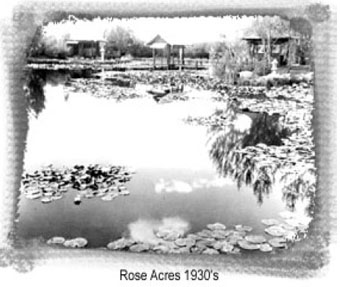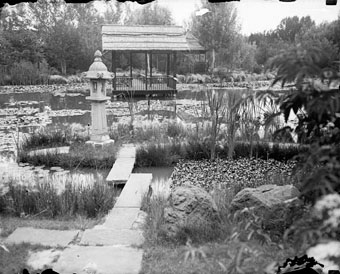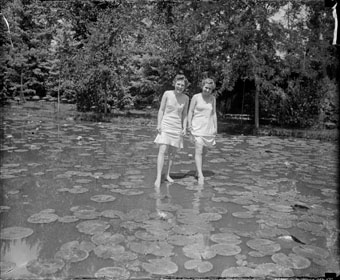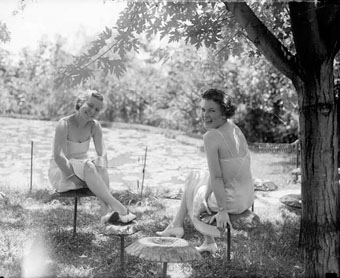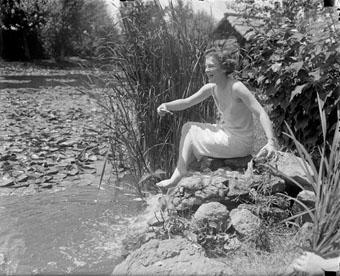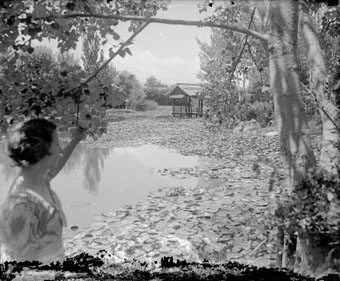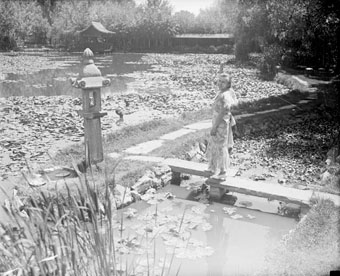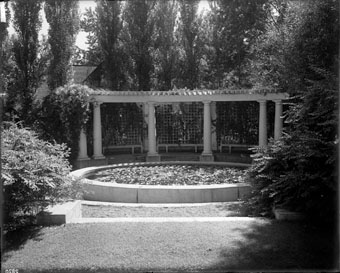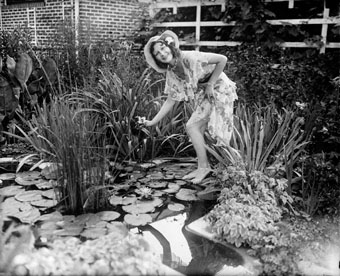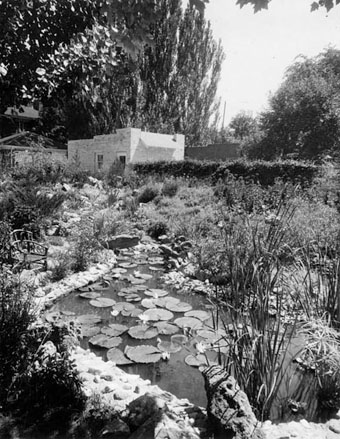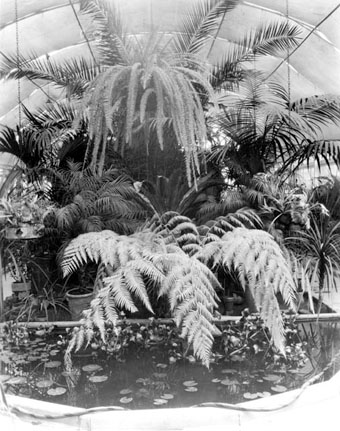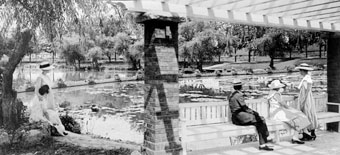Viewing through the window to the past, the beauty of water gardening appeared in Colorado about the turn of the last century. Written history, in word and pictures, tells us that during the first three decades of the 1900’s, three major public water garden displays were created in the Metro area.
Rose Acres, Denver
Louis Liebhardt, a well-known Denver real estate and investment businessman, purchased 36.5 acres of prairie land near the foothills in 1899. His intent, as a lifelong bachelor, was to have a place where nieces and nephews could visit and enjoy the outdoors.
A frame house was the only improvement on the acreage. His first addition to the property was hundreds of trees. This was only the start of a project which would eventually become a nationally-known garden named Rose Acres.
In 1928 he built a large four-story brick home on the property. His sisters, Dr. Laura Liebhardt and Miss. Minnie Liebhardt, both spinsters, lived with him on the property and assisted with the garden development. The three traveled the world to find unusual plants to satisfy their passion for beautiful gardens. Lotus from Egypt and lilies from Africa were among their aquisitions. Water was piped into the property from the mountains to a reservoir, the first of 14 lakes and ponds developed on the property.
A rose garden with 40,000 rose bushes filled the entrance area to the mansion. The water gardens were contiguous, winding throughout the grounds. Revolving cast iron lotus leaf seats were situated along the flagstone pathways. Several drinking fountains on the property were designed to blend with the garden and look like lotus leaves with a poised bird spouting water from its beak. In a deliberate attempt to attract and protect birds drawn to the natural habitat, Liebhardt hand-carved and painted birdhouses made of gourds in ornate designs to look like frogs and fish. An estimated 500 of these gourd houses were hung in the trees and on the fences.
The Liebhardts created an Oriental theme throughout their garden, including teahouses, Japanese bridges and ornate gold carvings purchased from the St. Louis World’s Fair Chinese exhibit. A Shinto Temple of Ho Shan, god of prosperity and happiness, adorned one garden. Ponds were planted with lotus and lilies. It was estimated that 150,000 to 300,000 goldfish were in several of the ponds. Baskets with shredded dry bread were placed along the pathways near the ponds for feeding the fish. The sisters prepared 50 loaves daily for feeding. To protect the rare lotus and waterlilies, hot water was piped from the boiler room in the basement of the mansion through the ponds to stabilize water temperatures. Plants were brought indoors in September of each year.
One day each week the public had the opportunity to tour the gardens. By invitation only, hundreds of guests were brought to the gardens annually on Wednesdays or Saturdays, 9 a.m. to 5 p.m., July through mid-September. August was suggested as the best month to view the gardens. The invitations stipulated “no Kodaks please.” A printed booklet with photos of the gardens accompanied each invitation.
At the age of 75, Louis Liebhardt died of a sudden heart attack in 1938. Rose Acres flourished until its sale in 1951. It was buried with a housing development in 1953.
These photos were obtained from the various sources available at the Denver Public Library, Western History Collection, Genealogy Department. Researched by John Mirgon, and Cyndie Thomas, Colorado Water Garden Society,
|
